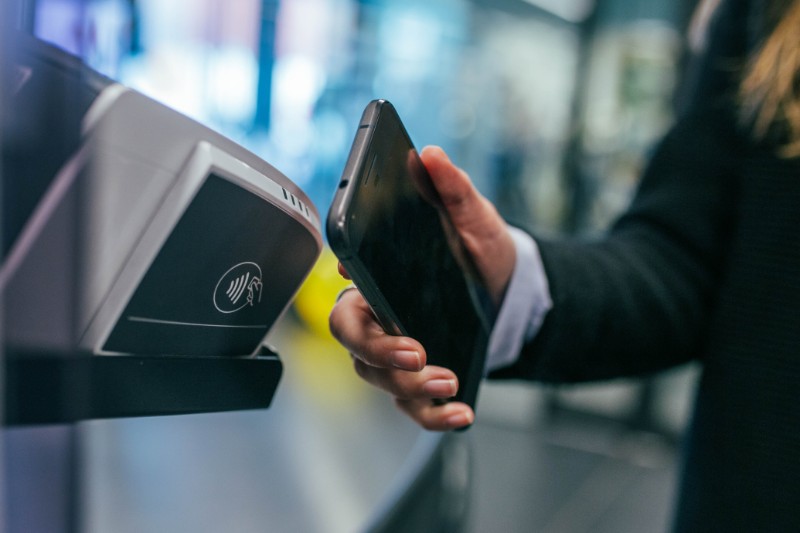While technology has changed many other aspects of our daily lives, banking and finance still lag behind other sectors. Innovations from artificial intelligence to blockchain tech, however, offer ways to jumpstart the fintech industry. Major strides in finance technology have helped streamline processes and increase financial literacy. Fintech firms have a unique opportunity to capitalize on the demand for more responsive, user-friendly finance. We’ve decided to update this post (originally published October 2018) to see how these trends have unfolded. Let’s take a look at eight trends taking over the sector in 2019.

More sophisticated AI chatbots
Among the many fintech trends, AI voice-operated assistant services increasingly vital parts of many payments apps. Banks and other services are starting to roll out AI customer service chatbots. Rather than wait and talk to a human, you’re likely going to talk to an increasingly sophisticated AI chatbot. Able to process language and predict questions, these systems have made huge strides.
Of course, chatbots have been around for over a decade now, but advances in the way AI chatbots analyze large pools of unstructured data has made these tools far more effective. IBM’s Watson Assistant, for instance, leverages a client’s chat history to predict and intelligently direct clients to answers, or to human service reps, if necessary. Improved customer satisfaction boosts sales and better AI chatbots are both improving customer service while also cutting down on redundant labor costs.
PwC reports that voice banking will save the industry $3 billion annually. Better, more responsive chatbots can help bring these changes to consumers. AI chatbots have already begun replacing tellers and customer service lines to resolve client tickets more efficiently and at a fraction of the cost. Last year Singapore’s OCBC Bank partnered with Google to launch the first AI-powered voice banking platform.
The technology permits customers to chat about bank services which include calculating loan interests, planning future savings, receiving the latest finance market updates and searching for nearby ATMs. Chatbots have also gained popularity by allowing customers to conveniently talk with robots in real time and get accurate answers or detect fraud based on learned customer behavior.
AI chatbots help banks reach more customers when and where they want to bank. This not only increases customer satisfaction but also helps firms retain users. AI chatbots help keep costs down and keep customers happy. As one of several fintech trends, this is by far the most widespread currently.

Digital-only banks
Just as AI chatbots have helped cut labor costs, many of the latest banks are launching as digital-only. Fintech applications are replacing more and more brick and mortar bank branches. Once an unthinkable move, this trend indicates that the newest generation of banking customers trust mobile applications to do banking tasks. Digital-only banks are now gaining popularity among millennials as they can receive services in the comfort of their homes or offices, and no longer have to visit banks, now they can perform vital tasks on the website or app.
The Financial Brand reports that visits to bank branches will decline by 36 percent between 2017 and 2022. Furthermore, desktop banking will also suffer considerably while mobile transactions will grow 121 percent in the same period. Millennials are much more open to fintech trends. They’re more likely to trust and use a mobile device to bank remotely than previous generations.
One current example is the digital bank Revolut, a finance app that enables straightforward cross-border payments. An increasingly mobile workforce will only continue to demand more responsive financial services. Revolut users control their finances at the tip of their fingers through the app. One of its most compelling features is its low rates for currency exchange and features that allow you to pay abroad in your home currency without the fees of traditional payments providers.
As of 2019, Revolut has more than 2 million users and gets between 6,000 and 8,000 new customers every day.
In addition to Revolut, it’s impossible to talk about mobile banking trends without mentioning Facebook’s Libra cryptocurrency payments system. The social media company is entering the payments ecosystem promising to drive broad cryptocurrency adoption. While it’s still a ways off before Libra goes active, the profound implications for the fintech sector are huge. Tapping into the billions of users — many of whom are unbanked could bring many more consumers into the banking fold.
Libra will function as both a currency and as a digital wallet — potentially allowing consumers in the developing world to bypass brick and mortar banks altogether. This, of course, is only possible because of the widespread use of mobile devices –, especially in the developing world. A savvy fintech startup would do well to build a mobile payments system.
Going cashless
Cashless payments are starting to take over the finance space. With the waves of smartphone use as well as better internet connection consumers in the developing world are increasingly choosing digital payments over cash. Government efforts to reduce fraud and shore up tax revenue are also motivations. India’s Narendra Modhi infamously banned large denomination bills in 2016 to cut down on fraud. The unpopular measure, however, seems to be driving broader adoption of digital payments systems in India. Sweden and other Scandinavian countries are also floating efforts to reduce cash circulation.
The European Parliament has taken it a much higher, by launching a second payment service directive which authorizes all businesses to use alternatives to banks. In addition, the directive gives access to any third-party payment solutions to accounts that are hosted by banks.

Biometric fintech trends
Along with the good fintech trends, there are also some drawbacks. Cyber attacks and other security threats pose unique challenges to the emergent tech. Developers and security specialists have to be creative in the current market to protect consumers from theft. As mentioned earlier, AI chatbots are one line of defense as their machine learning algorithms improve fraud detection.
Biometric technology is another emerging trend fintech firms are incorporating into their security features. Iris scans, facial recognition, and fingerprint scanners are among the most popular biometric indicators. Voice activation is also a major trend. Not only is biometric tech safer, but it’s also faster and more pleasant for end users. You no longer need to remember passwords go through several steps to reset.
It also means that no one else can access an account. earlier this month, Bahraini Ithmaar Bank unveiled a network of biometric ATMs using customer fingerprints. These types of security measures using unique physical identifiers will only increase the effectiveness of fintech applications.
Blockchain
One of the many technologies vying for a spot among fintech trends is blockchain. Distributed ledger tech — the underlying system that powers cryptocurrencies such as Bitcoin or Ethereum aim to change monetary transactions and the financial sector dramatically.
Blockchain has been taking over the traditional banking system slowly over time. Why? One of the reasons is the reduction of paperwork as it updates the digital ledger in real-time while storing all records in a highly tamper-resistant ledger.
Fees to transfer funds across borders are some of the most competitive, but adoption remains slow due to cumbersome UX. Facebook’s Libra appears promising, though competing visions of the level of decentralization and how the network should commit new data remains a major hurdle.
Developments in blockchain payments are likely to continue, though as a key component of more centralized systems. Grand visions of decentralized finance and peer-to-peer lending are still distant. However, banks or other fintech platforms would do well to incorporate key aspects of blockchain technology in their services — especially frictionless cross border payments.
Conclusion
Change is inevitable. In the financial sector, keeping ahead of the fintech trends is essential to stay relevant in the market. As pressure builds on big banks to innovate, and start-ups continue to attract new customers, new features that make the banking experience better and more responsive are vital. From AI chatbots that can predict questions to digital wallets in increasingly cashless societies, 2019 is an exciting time in fintech. As firms roll out new mobile apps to address major pain points, the entire ecosystem will continue to adapt.
Want to learn more about how to build a fintech app? Drop us a line and get started.
See also:
- 5 key features for Fintech App
- 10 ways to improve your Fintech App security
- Starting a Fintech Start Up? Check How to Build a Fintech App!
- How to hire Developers for FinTech Company!




